A look at what Native Advertising is, its adoption, technology, and spending trends in 2023.
Have you seen any native ads on your favorite website lately? Chances are that you’ve seen many, but you just don’t know it. You see, that’s the beauty of native advertising.
It’s there, but you don’t see it. It’s a non-intrusive way for advertisers to connect with their target audience without getting too pushy or obvious.
In an earlier post on native advertising, we discussed in detail what native advertising means, its history, ethical concerns relating to native ads, profitability of native ads, why they’re becoming so popular, most common ad formats, and some prominent examples.
In this post, we’re going to look at some of the adoption, technology, and spending trends related to native advertising so that you can work on a more informed ad strategy in 2023.
But before that, let’s take a brief look at what native advertising is.
What is Native Advertising?
Native advertising is a form of paid advertising in which the ads fit the look, feel, and function of the platform on which they are published.
The primary reason why marketers are shifting towards native advertising is the fact that it improves the organic reach of an ad as well as engagement.
Now that you know what native advertising is let’s get to know its future trends you need to know about.
1. Wider Adoption of Native Advertising
In 2023, native advertising will continue to grow in popularity as a way for brands to reach their target audiences. This type of advertising is effective because it is less intrusive than other forms of advertising, and it can be customized to fit the look and feel of the website or platform on which it is displayed.
Additionally, native advertising is often more affordable than other forms of online advertising, making it a good option for small and medium-sized businesses.
2. Increased Spending on Native Ads

As native advertising continues to evolve and gain wider acceptance in the online publishing ecosystem, ad spending on native ads is only expected to go up — at least if trends based on previous data are anything to go by.
In fact, native advertising spending in the U.S. jumped 37% in 2021, and is expected to reach nearly $100 billion in 2023.
This trend is being driven by the continued growth of digital media consumption, as well as the shift to mobile devices and away from traditional desktop computers. As consumers spend more time on their phones and tablets, they are more likely to see and engage with native advertising. This provides a major opportunity for businesses to reach their target audiences with highly personalized and relevant messages.
Video advertising is a growing part of total social network ad spending as platforms continue to invest in native content spaces and compelling ad formats.
Video advertising spending is expected to increase as video native advertising becomes more popular. This increase in ad spending will allow platforms to invest more in video content and create better native video ad experiences for users.
3. Greater Use of Native Advertising Platforms
As more people are getting on board with the benefits of native advertising, there will be more brands who will jump on this bandwagon. Advertising professionals will have even more options and opportunities to reach their target audience and provide their brand’s message with the native platform’s original content.
With the growing popularity of native advertising, we can expect to see more platforms emerge that cater to this specific form of advertising. This will provide brands with even more options to reach their target audience.
Also Check: The 7 Best Native Ad Networks for Online Publishers
4. More Creative & Innovative Native Ad Formats
Many of us have seen it on our Facebook and Twitter feeds without even knowing it. However, more and more brands are taking advantage of this trend and are creating high-quality content to promote their products. The demand for quality and innovative ad content is rising.
This is why I believe brands will need to get more creative with their native ads. As we move forward, we can expect to see more innovative and creative forms of native ads that push the boundaries of what is possible.
5. Native Ads Meet Programmatic Buying
Native advertising has been around for some time now, and so has programmatic ad buying, but so far, the two have existed more or less independently of each other.
Many instances of native advertising currently tend to be personalized creatives made by publishers in consultation with their advertisers. Thus, scaling and automation for the long term become a challenge and a problem that must be solved.
Sponsored posts and other manually implemented forms of native ads are just one side of the coin. There are multiple other ad formats, such as in-feed, in-ad, search, content recommendation, and promoted listings, that works well to automation.
The great thing is that this shift from manual to programmatic is not just being spearheaded by up-and-coming ad tech startups that can afford to be innovative and agile but even established players in the industry.
If someone asked you to say some of the big words in the media, it’s a good bet that you would say mobile, native ads, and programmatic.
Google has just knocked down all three in a single gesture, allowing its publisher customers to expose native ad inventory in their mobile apps to buyers on the DoubleClick Ad Exchange.
The long-expected move is likely to bring a flood of new advertiser dollars to native ads, observers say, including from big brand advertisers that routinely scoop up IAB standard placements on exchanges but whose “native programmatic” buys have been largely relegated to Facebook, Twitter and the small crop of ad tech vendors that have sprouted up in this space.
The emergence of new native ad formats, when coupled with the principles of programmatic buying and user targeting, will both bring a level of scalability that is currently missing in native advertising and ensure higher levels of user engagement with ads, a win-win for both publishers and marketers.
6. Widespread use of Content Recommendation
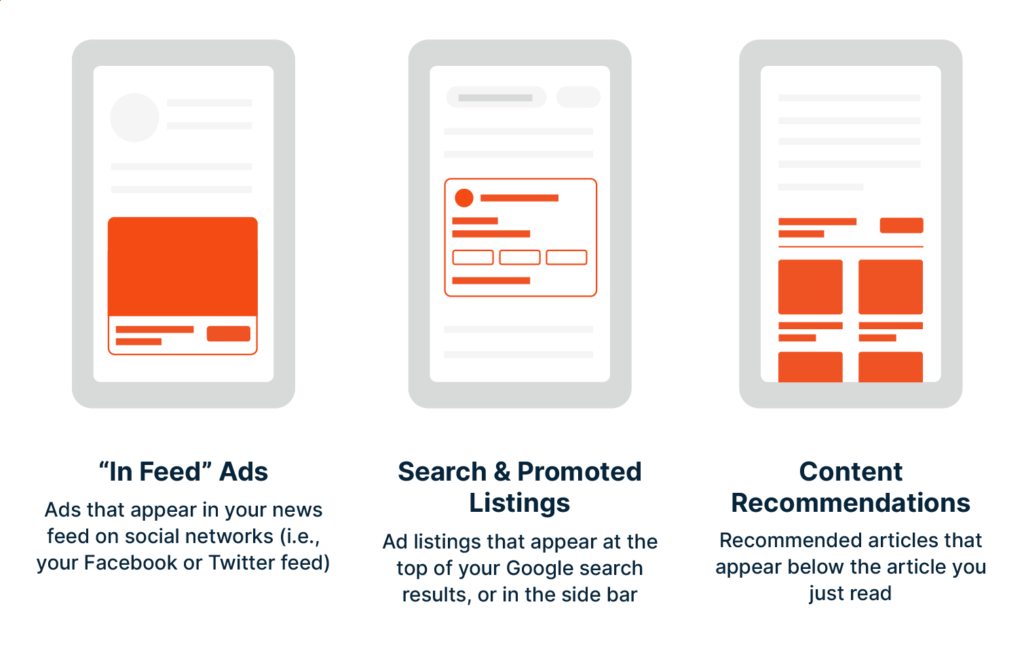
In 2023, the landscape of native advertising will continue to evolve as marketers seek new ways to reach and engage their target audiences. As such, we anticipate that content recommendation will play an increasingly important role in native advertising campaigns.
There are many reasons why the content recommendation is likely to become more prevalent in the next few years.
Mobile-first consumers
The proliferation of mobile devices and the rise of mobile-first consumers has created an environment in which people are constantly looking for new content to consume on the go.
Ad blocker
The increasing use of ad blockers has made it more difficult for marketers to reach their audiences through traditional means such as display advertising. In fact, as per Bakclinko, about 42.&% of all internet users are using an ad blocker.
The content recommendation provides a solution to both of these challenges. By recommending relevant and engaging content to users, marketers can reach their target audiences even if they are using ad blockers.
Furthermore, content recommendations can be personalized to each individual user, ensuring that they see content that is relevant to their interests.
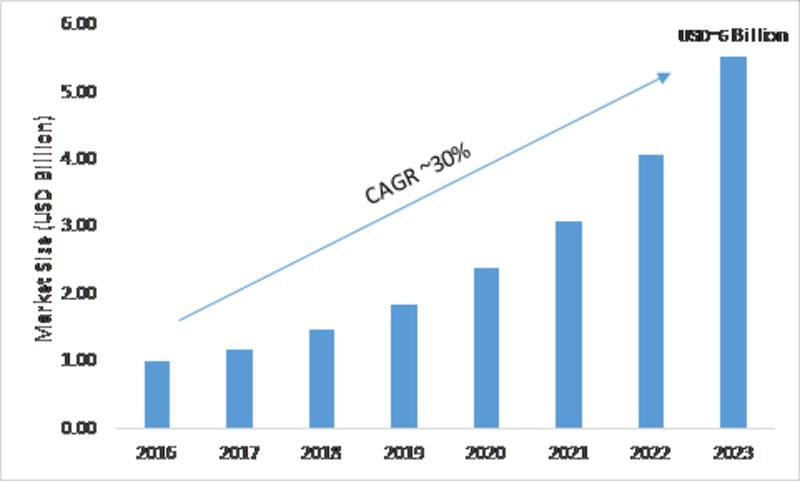
Here’s what John Lemp, CEO and founder of Revcontent, had to say about their growth and the recent acquisition of ContentClick:
“Our team has a strong passion and desire to provide a different kind of solution then what has existed on the market for the past 8 years, a solution that will put the control of the user experience back into all publishers’ and agencies hands.“
Google is also getting into the content recommendation mix with a new tool for AdSense publishers. Matched Content gives publishers access to the familiar style of widget that appears at the bottom of articles.
7. More Focus on Video Ads
As of now, Native Channels has not yet opened doors for video advertising to all businesses just yet, but this year is looking to be more promising in that regard. According to a survey done by Business Insider, this upcoming year is going to be especially beneficial for those who choose to advertise through videos.
With native video ad spending increasing at an annual growth rate of 21.9%, it’s definitely a worthwhile decision to allocate a budget for native video testing and optimization throughout this year.
By doing so, you can ensure that your video advertising budget is well spent and that your videos are as effective as possible.
Here are some other key takeaways from BusinessInser and Outbrain that you must know:
— Social native ads will account for the biggest share of native ad revenue during this time period, but native-style display ads will grow the fastest.
— Native advertising is easier to understand than other types of advertising, such as display or social ads. In fact, 62% of consumers say that native ads are easier to understand than display ads, and 31% say they are easier to understand than social ads.
— Native display ads, like the splashy native ads on Yahoo’s news pages and apps, will see the fastest ramp-up.
— Sponsored content, like some of the paid stories and sections on BuzzFeed and The New York Times (and Business Insider), has also attracted considerable attention.
— Native ads perform better than traditional display. This is particularly true on mobile. Desktop native click-through rates (CTRs) averaged a respectable 0.15%, while native-mobile ads had CTRs over 1%, according to recent data from Polar Media Group and Celtra, respectively.
— Consumers hold a generally positive attitude toward native advertising, according to survey data, but advertisers and publishers must ensure that ads are relevant and are purchased by trustworthy brands to avoid the risk of any mainstream backlash.
Summing Up
We hope by now you have completely understood what native advertising is and its trends. So, as native advertising becomes more popular in 2023 and in years to come, brands will need to get more creative with their ad formats in order to stand out from the competition. We can expect to see more innovative and creative native ads that push the boundaries of what is possible.
Native advertising also doesn’t suffer from many of the problems that display advertising does while offering many benefits that the latter doesn’t.
Just from a business perspective, this is one train you don’t want to miss. Whether you’re a publisher or an advertiser, you must have a native ad strategy going in 2023.
FAQ Related to Native Advertising
Native advertising is paid media that matches the content of a media source.
Native advertising platforms are a great way for publishers and advertisers to achieve their advertising goals. By syncing ads with web content, native ads don’t stand out as being ads – instead, they appear to be a natural part of the content that users are viewing.
Native ads are an exciting thing for publishers because they allow them to grow their existing readership and revenue while at the same time creating a relaxing and frictionless reading experience for the reader.

Shubham is a digital marketer with rich experience working in the advertisement technology industry. He has vast experience in the programmatic industry, driving business strategy and scaling functions including but not limited to growth and marketing, Operations, process optimization, and Sales.
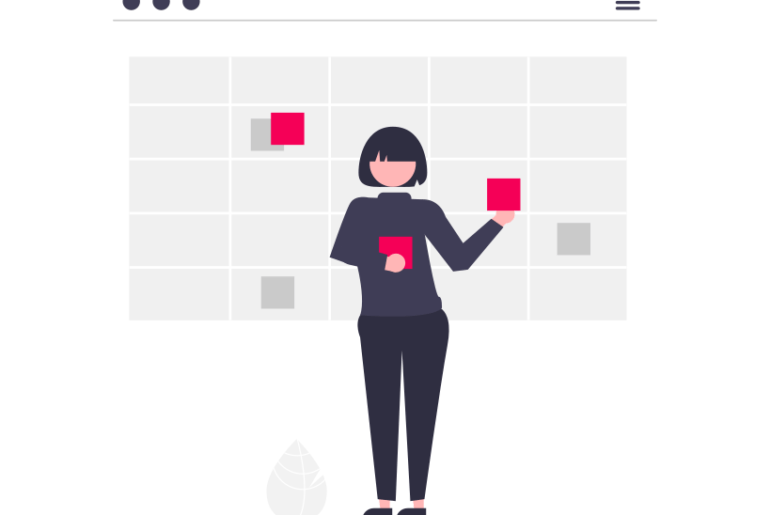


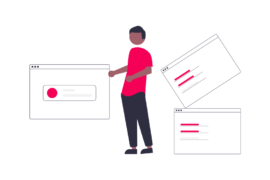
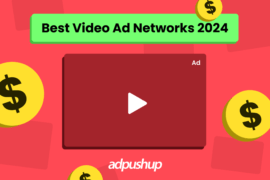
![Top 12 Ad Networks in India Every Publisher Should Know [2024 Edition] Indian Ad Networks](https://www.adpushup.com/blog/wp-content/uploads/2019/09/undraw_Note_list_re_r4u9-270x180.png)

